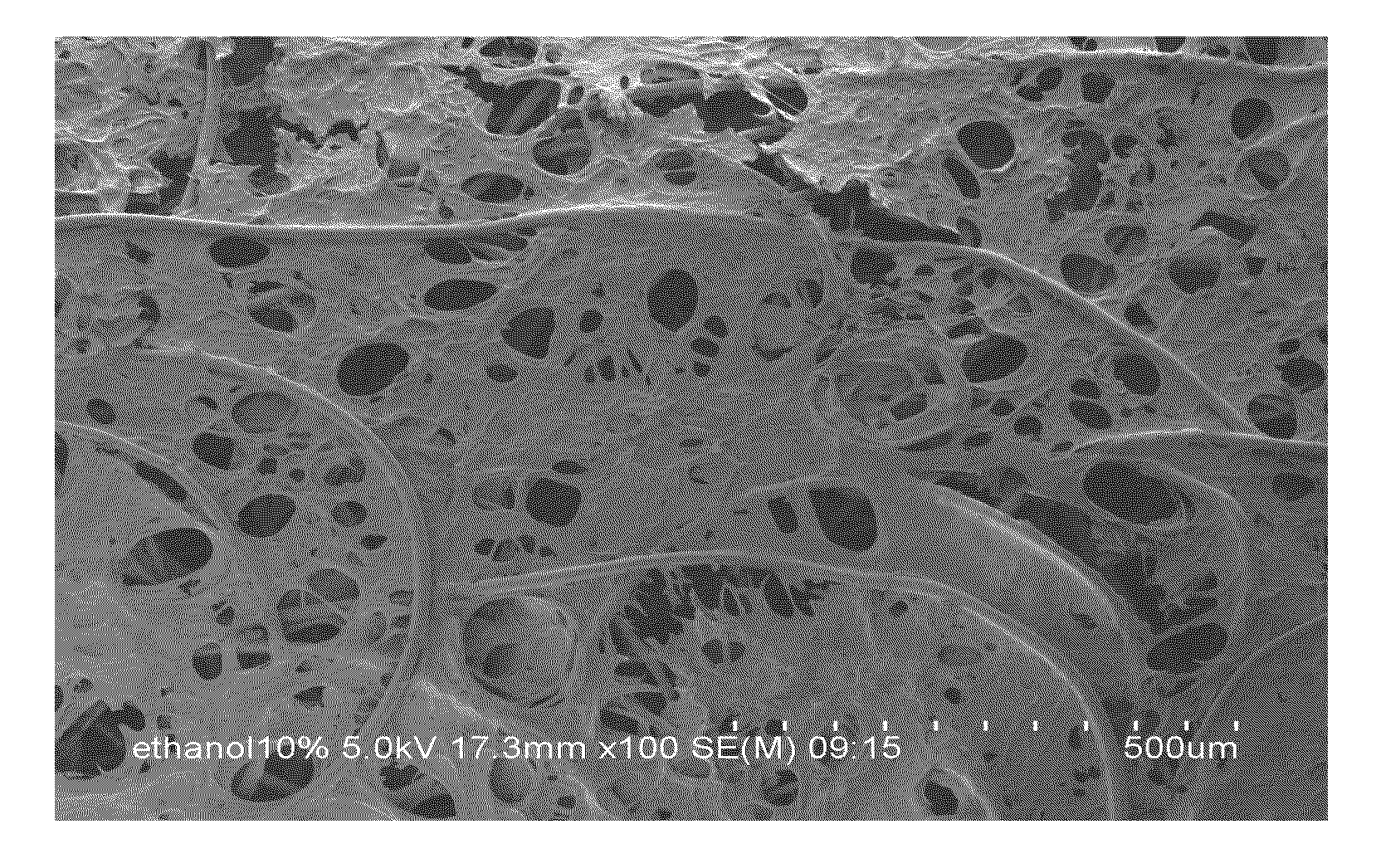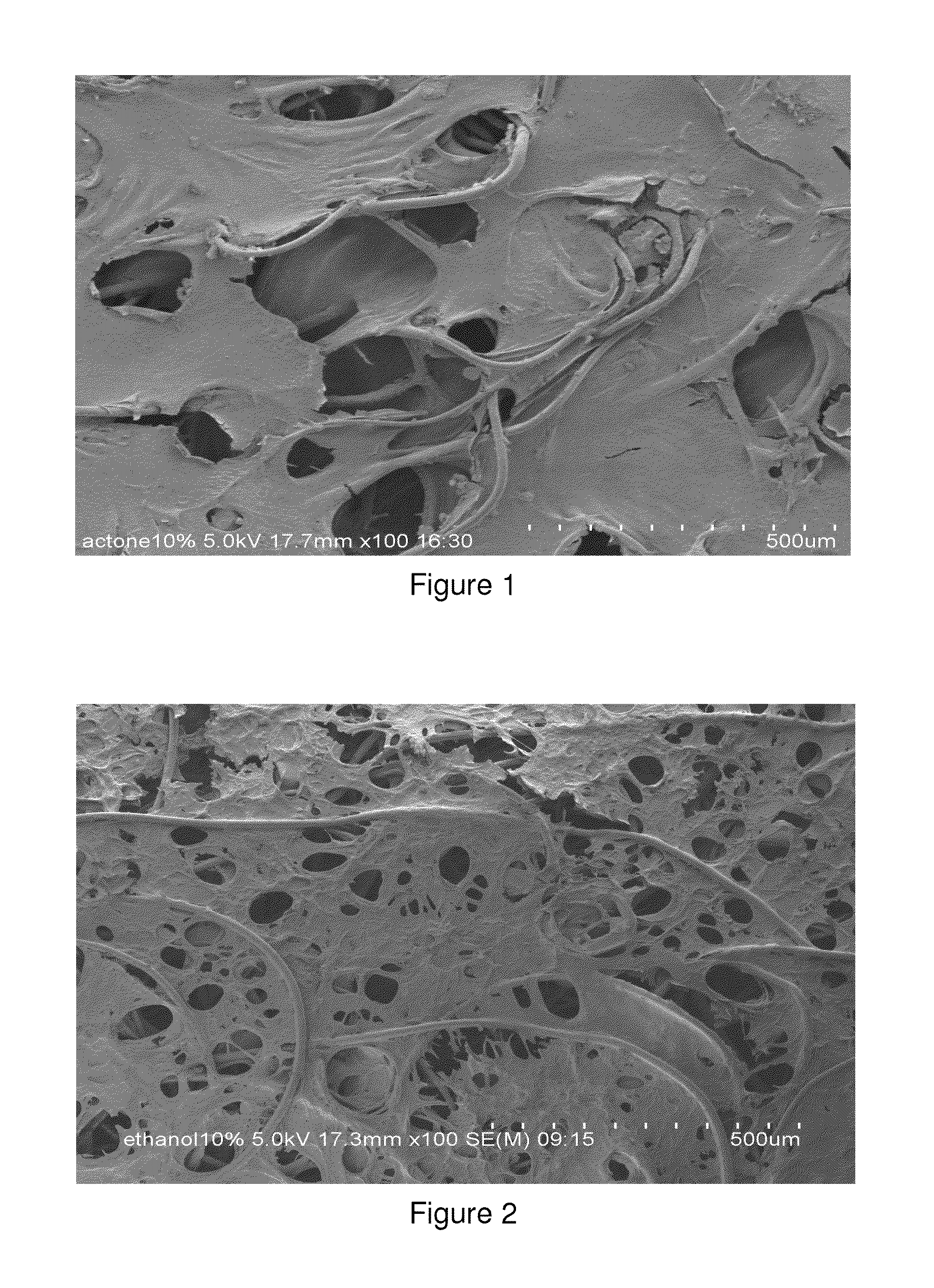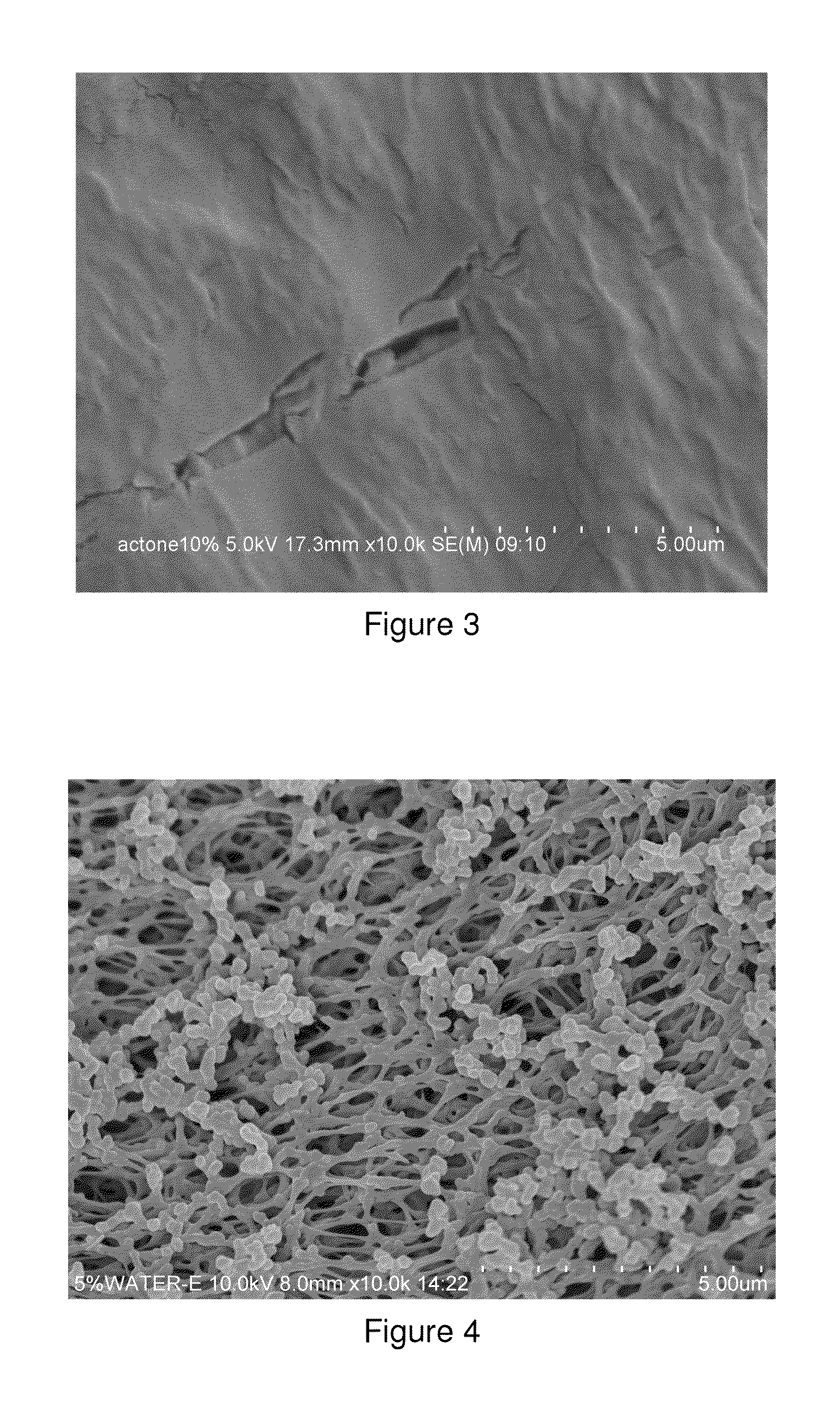Composite catalytic membrane applied to catalytic esterification and preparation method thereof
- Summary
- Abstract
- Description
- Claims
- Application Information
AI Technical Summary
Benefits of technology
Problems solved by technology
Method used
Image
Examples
example 1
[0032]Using the base-catalyzed hydrolysis method to modify the nonwoven fabric. It covers the following steps: Prepare the NaOH solution in ethanol at 5 g / L and the aqueous solution of cetyl trimethyl ammonium bromide at 1 g / L. Place the nonwoven fabric into a three-necked flask. Add 50 mL of NaOH solution in ethanol and 1 mL of fixed promoting agent. Then heat the mixed solution in a thermostatic water bath at 40° C. for 1 h. Take out the nonwoven fabric and soak it in ethanol for 2 h to remove the unreacted reagents. Then place the sample in the electric thermostat blast drying oven to dry for 3 h. Use a mercury porosimeter to measure the specific surface area and porosity of the base membrane. The properties are as follows in Table 1:
TABLE 1Measured Performance Parameters of Different Base MembranesNon-woven fabricThe total porousPorosityBase membrane(Base membrane)area (m2 / g)(%)thickness (mm)Polyester4.05165.041.8Polyacrylonitrile3.98660.121.6Polyvinyl alcohol4.21365.341.7Polyet...
example 2
[0035]The modification method of the base membrane and the membrane casting solution preparation are the same with those in Embodiment 1. The difference is the surface coating method of membrane formation. Place a clean and dry glass plate on a membrane-scraping platform with prior leveling. Fix the nonwoven fabric onto the scraping blade. Ensure that the nonwoven fabric is fixed flatly without wrinkles. Pour a certain amount of casting solution uniformly on one end of the nonwoven fabric. Scrap the solution with a glass rod into a uniform membrane of a certain thickness and then keep the membrane in the open air for one minute. Then place it in the ethanol coagulation bath. Coagulate for 60 min. Then add the cross-linking solution (prepared by mixing 50% glutaraldehyde aqueous solution with anhydrous ethanol at a volume ratio of 1:30). Soak and cross-link for 2 h to obtain the porous composite membranes. The catalytic test conditions are the same with those in Embodiment 1. Catalyt...
example 3
[0036]Preparation of the composite membranes by impregnation method is as described in Embodiment 1. The difference is that the sulfonated polymers (any one of the polyvinyl alcohol, polyethylene-vinyl alcohol, polyvinylidene fluoride, polyacrylonitrile, various celluloses, polysulfone or polyether sulfone polymer with the degree of sulfonation at 4%) are dissolved in the N,N-dimethyl pyrrolidone solvent and thus formulate a casting solution of 5 wt % which produces the sulfonated polymer / solid acid porous composite membrane. At a temperature of 65° C. and with the mass ratio of oleic acid and methanol at 1:3 and the molar ratio of acetic acid and ethanol at 1:3, the catalytic esterification properties of the porous composite catalytic membrane with the polyester nonwoven cloth as its base membrane are as follows in Table 3.
TABLE 3Impact of Different Sulfonated Polymerson the Catalytic Esterification PropertiesEthyl-acetateFatty acid-methylconversionester conversionSulfonated polyme...
PUM
| Property | Measurement | Unit |
|---|---|---|
| Temperature | aaaaa | aaaaa |
| Temperature | aaaaa | aaaaa |
| Fraction | aaaaa | aaaaa |
Abstract
Description
Claims
Application Information
 Login to View More
Login to View More - R&D Engineer
- R&D Manager
- IP Professional
- Industry Leading Data Capabilities
- Powerful AI technology
- Patent DNA Extraction
Browse by: Latest US Patents, China's latest patents, Technical Efficacy Thesaurus, Application Domain, Technology Topic, Popular Technical Reports.
© 2024 PatSnap. All rights reserved.Legal|Privacy policy|Modern Slavery Act Transparency Statement|Sitemap|About US| Contact US: help@patsnap.com










